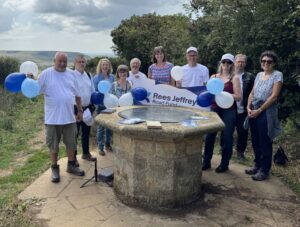The Rees Jeffreys Road Fund has been documenting the over 70 Roadside Rests the Fund has created over a period of nearly 65 years.
The Rees Jeffreys Road Fund was founded by William Rees Jeffreys (1872-1954), the first Secretary of the Road Board, the precursor of the Department for Transport.
William Rees Jeffrey was a lifelong campaigner for roads and was a council member of the Cyclists’ Touring Club at the turn of the 19th century. In 1907 he organised a competition, supported by the RAC and AA, to combat the problem of dusty roads, which were a menace for both road users and anyone living or working alongside a road. After his experience at the Road Board, he became known as ‘the British Ambassador for Good Roads’.
One of William Rees Jeffreys’s passions was to be able to drive or cycle into the countryside, pull off the road at a safe place and admire the view. To ensure that William’s work continued after his death, the Fund has invested in more than 70 Roadside Rests across the UK over nearly 65 years.
The Fund’s records show the first Roadside Rests were created in 1958, just a few years after William Rees Jeffreys died. The first Roadside Rests created were overlooking Chesil Beach in Dorset; at Llanberis in Snowdonia; Old Winchester Hill in Hampshire; Sutton Bank on the North York Moors; Fishguard Fort in Wales; and at Hanger Hill, Reigate in Surrey.
Chairman of the Trustees David Tarrant said, “As Trustees of the Rees Jeffreys Road Fund we believe roads really matter to all of us, whether we’re making journeys as drivers, passengers, pedestrians or cyclists. During the pandemic people “re-discovered” the value of being able to get out into the countryside and admire the scenery and that inspired us to find out how the many Roadside Rests the Fund has invested in over the decades have fared. The task of tracking down the Roadside Rests the Fund helped pay for has been made challenging by the fact that we are working from some incomplete records and by change made to road layouts over the years. We are delighted that our efforts as Trustees are being helped by enthusiastic members of the public who have joined us in the hunt. As a result we have now been able to identify, locate and collect photo images for over a third of the Roadside Rests we believe were created since the 1950s. Details of the Roadside Rests are on our website, where we welcome feedback from anyone able to shed any further light on those Rests we have not yet document.”
You can hear about the project in this Highways Voices podcast.
(Picture – Roadside Rest in Pembrokeshire, courtesy RJRF)





















